Organizations often seek to migrate their virtual machines (VMs) from VMware to Hyper-V for various reasons, such as cost-effectiveness and Hyper-V’s increasing stability as a hypervisor. Here’s how you can convert a VMware VM to Hyper-V using MVMC (Microsoft Virtual Machine Converter).
Prerequisites:
- VMware vCenter or ESXi Host (source)
- Hyper-V Cluster (with Windows 2022 Server) or Standalone Host (destination)
- Microsoft Virtual Machine Converter (MVMC)
The free MVMC tool can be downloaded from this Site.
Table of Contents
How to Convert VMware to Hyper-V
To perform a virtual to Virtual migration or even a Physical to Virtual migration, you need a converter tool. Instead, if you wish to convert V2V, then you need to export and import a VM using an OVF file from various hypervisors to Hyper-V.
Convert VMware to Hyper V with MVMC
Regarding MVMC, Microsoft has already removed this tool (June 2017), and it was presumed to be available only via System Center.
The free MVMC tool can be downloaded from this Site.
Step 1: Install Microsoft Virtual Machine Converter
- Download MVMC:
- Although Microsoft has officially removed support for MVMC as of June 2017, it can still be downloaded from select repositories or system center integration.
- Install MVMC:
- Run the mvmc_setup.exe file on a system that has access to both the source VMware environment and the destination Hyper-V environment.
- Installation Steps:
- Launch the installer and follow the on-screen instructions:
- Welcome Screen: Click Next.
- License Agreement: Accept the agreement, then click Next.
- Installation Folder: Choose the destination folder and click Next.
- Install: Click Install to start the installation process.
- Finish: Once the installation completes, click Finish.
- Launch the installer and follow the on-screen instructions:
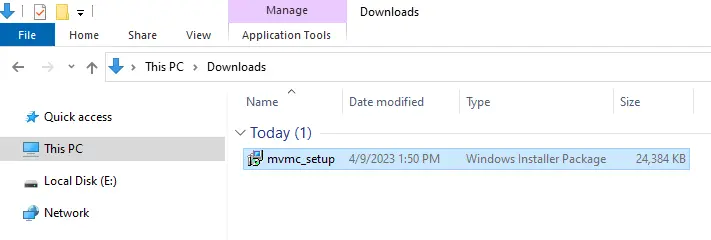
Welcome to Microsoft virtual machine converter Microsoft setup, choose next.
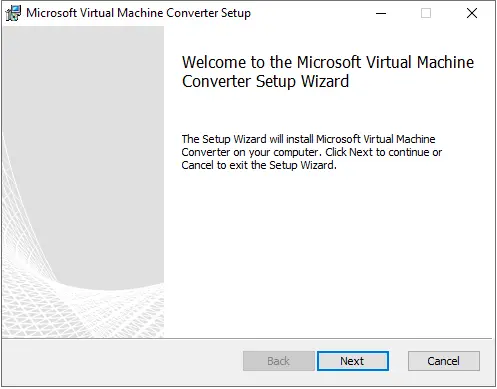
Accept the license agreement, and then choose next.

Choose the installation folder, and then choose next.
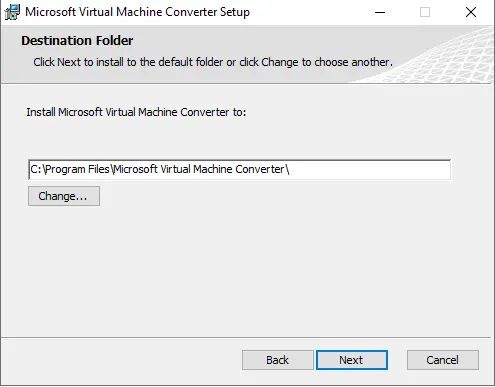
Click install

Choose finish
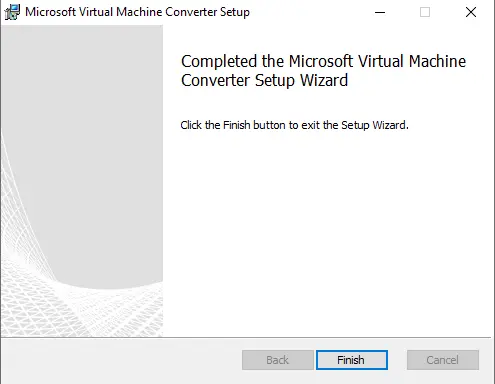
MVMC is successfully installed and ready to start the conversion.
Step 2: Set Up the Conversion Process
- Launch MVMC:
- Search for Microsoft Virtual Machine Converter in your system and open it.
- Conversion Wizard:
- Once the application starts, you will be prompted with the MVMC Wizard. Click Next to begin.
- Choose Conversion Type:
Select the Virtual Machine Conversion option, then click Next.
Convert Virtual Machine to Hyper-V
Search for a Microsoft virtual machine converter and open it.
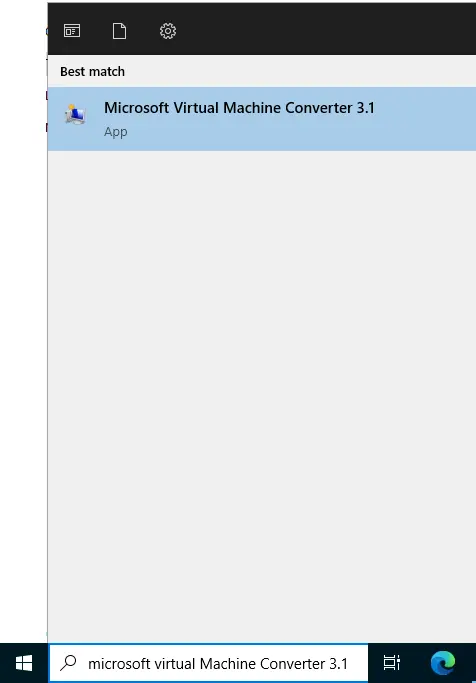
Microsoft virtual machine converter wizard, choose next.
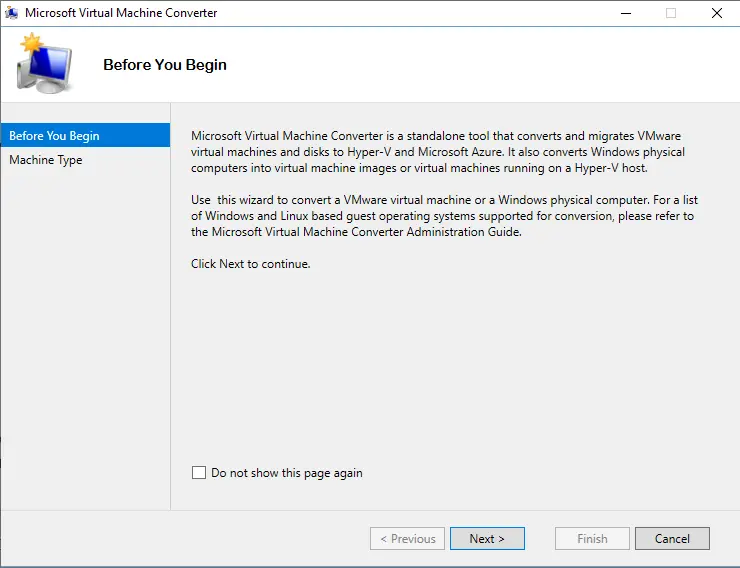
Select the Virtual Machine Conversion option, and then choose Next.
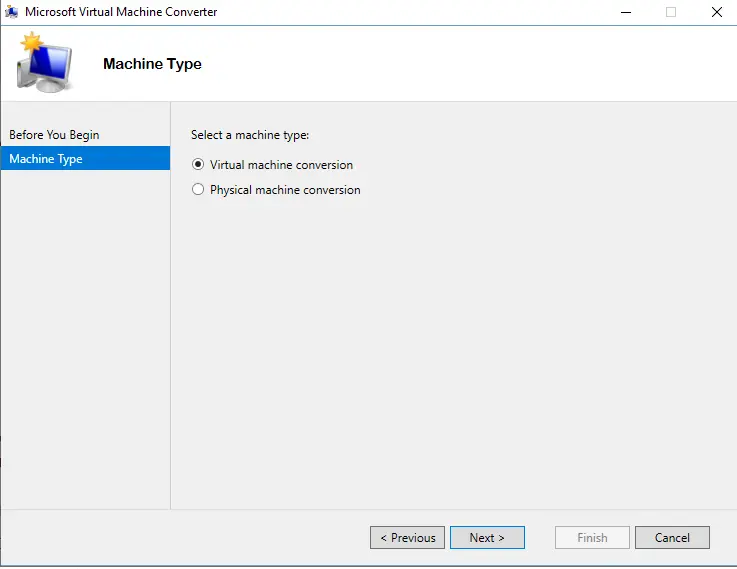
You can find two options to convert a virtual machine into a Microsoft Hyper-V.
Choose to migrate to the Hyper-V option, and then choose next.
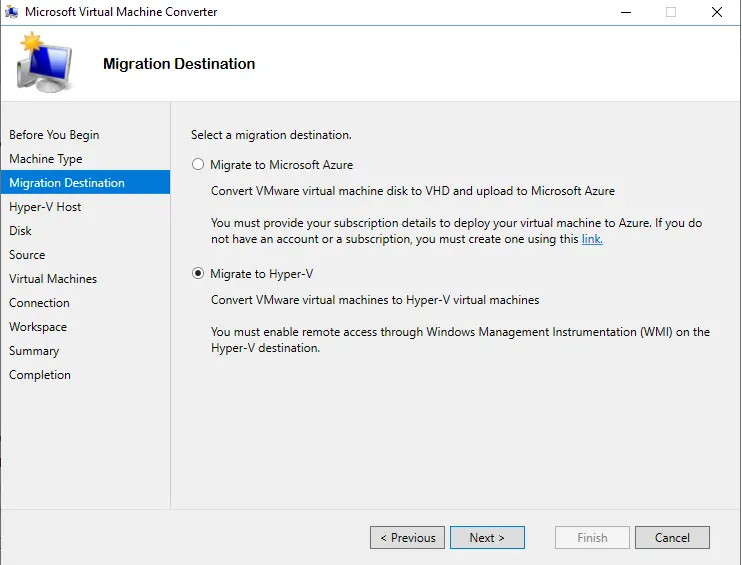
Step 3: Configure the Conversion Destination
- Choose Hyper-V Destination:
- Select Migrate to Hyper-V and click Next.
- Enter the Hyper-V host or Cluster details. The username should have administrative privileges on the Hyper-V destination.
- Specify Destination Path:
Provide the full storage path on the Hyper-V server where the converted virtual machine should be saved. If Hyper-V is part of a cluster, use a cluster storage path (e.g., \\192.168.121.212\C$\ClusterStorage\Volume1\).
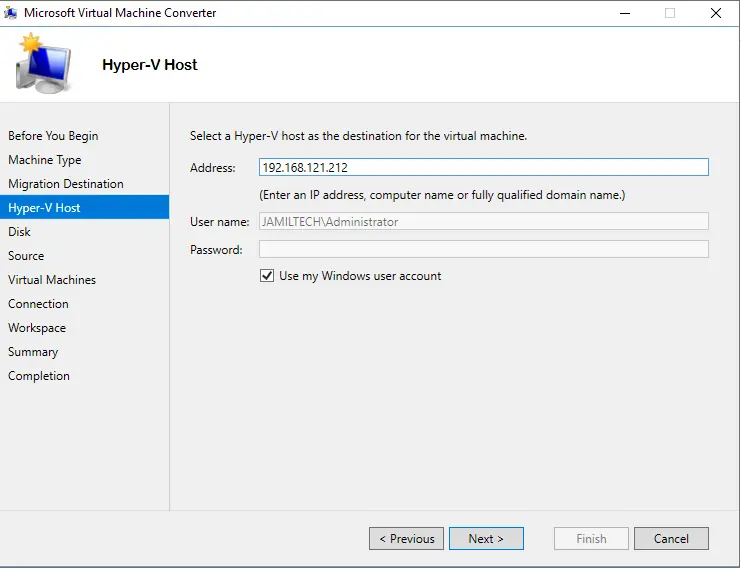
Next, you need to add the destination path in the Hyper-V to save the converted virtual machine.
In this example, the Hyper-V is part of a Hyper-V cluster, and the storage path is ClusterStorage
\192.168.121.212\C$\ClusterStorage\Volume1\
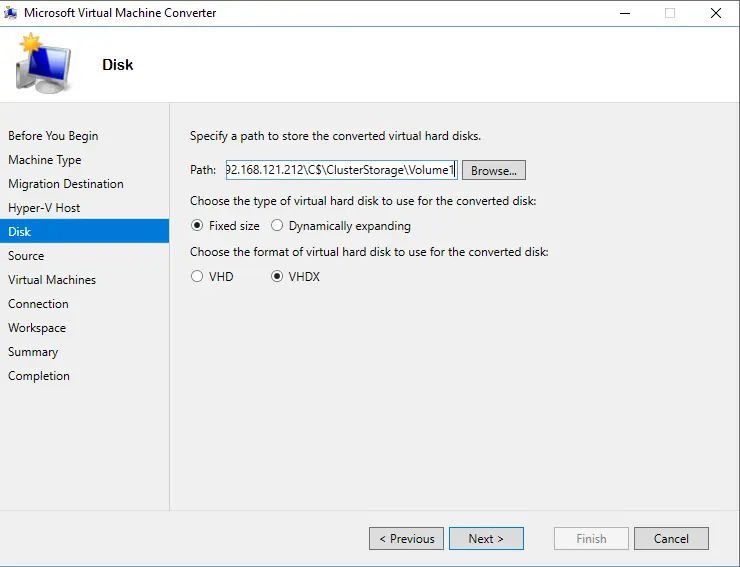
Step 4: Configure the Conversion Source
- Choose VMware Source:
- The source can be either a VMware vCenter or an ESXi host. Enter the necessary credentials (administrator credentials are required).
- Select Virtual Machine:
- Choose the virtual machine from VMware vCenter or ESXi that you want to convert to Hyper-V.

Click on the virtual machine for the conversion, and then choose Next.
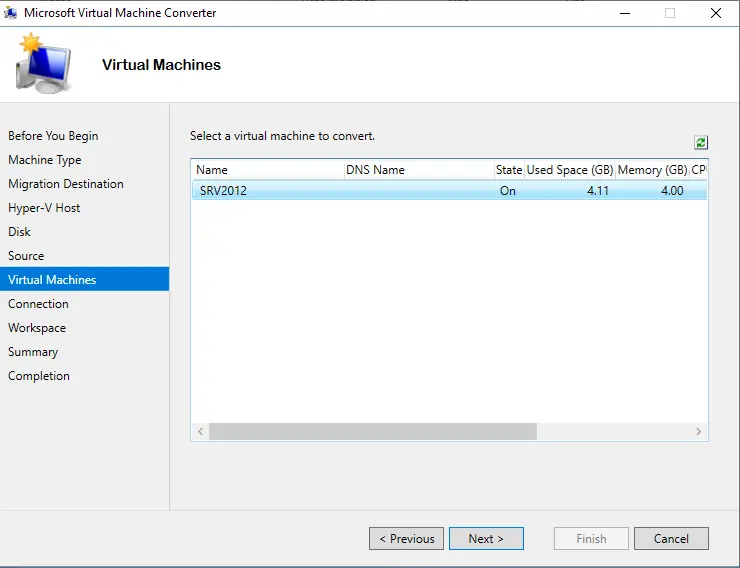
Click next
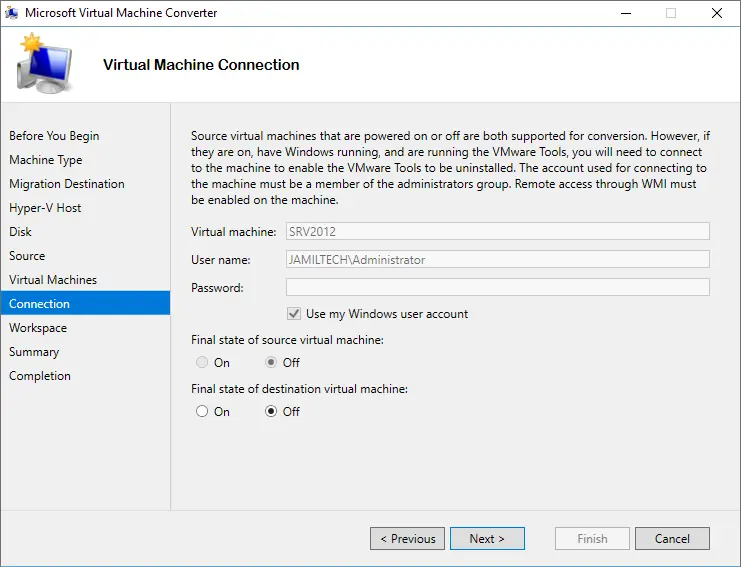
Step 5: Configure the Workspace and Begin the Conversion
- Specify a Temporary Workspace:
- Choose a local folder where the conversion files will be temporarily stored. This should be on a local disk for better performance during the conversion.
- Start the Conversion:
- After reviewing all the settings, click Finish to start the conversion process. MVMC will begin converting the selected VMware VM to a format compatible with Hyper-V.
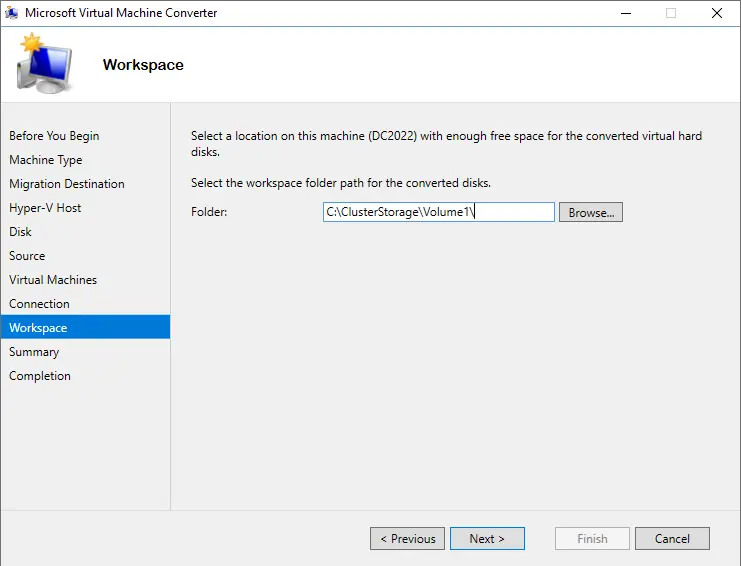
Click Finish to start the conversion process.
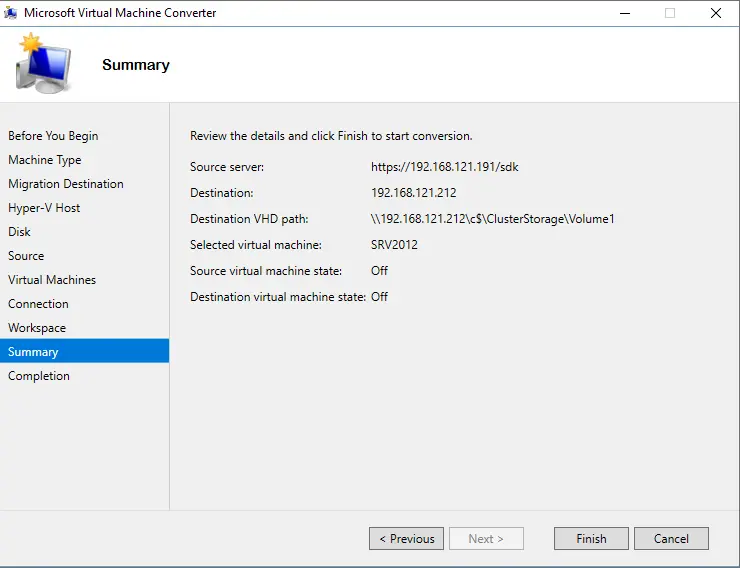
Once you finish all conversions from source to destination, the process starts.

Step 6: Verify the Conversion and Finalize Setup
- Completion:
- Once the conversion is complete, MVMC will provide a detailed report for every task performed during the conversion.
- Check the VM in Hyper-V:
- Open Hyper-V Manager on the destination host. You should see the newly converted virtual machine listed.
- Start the VM:
- Right-click the VM and select Connect to power it on. Ensure that the VM boots correctly.
- Configure Networking:
The converted VM may be running on a different network. Edit the VM’s settings in Hyper-V, navigate to the Network Adapter section, and connect it to the appropriate virtual network.
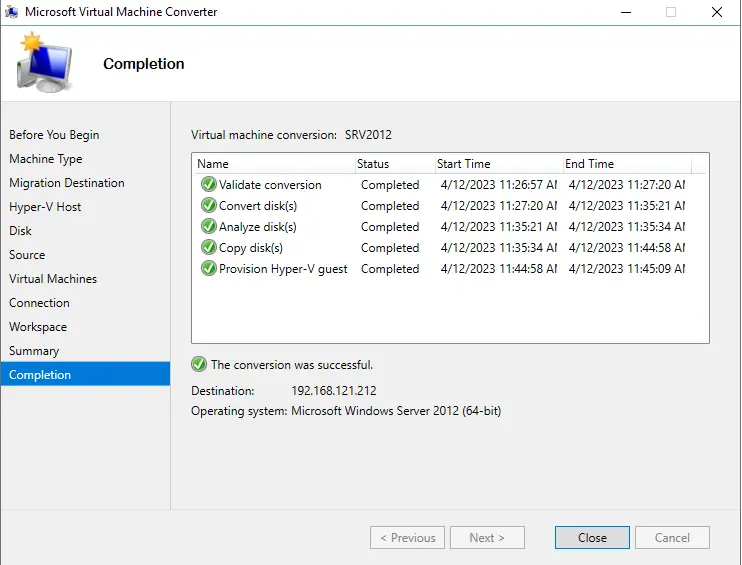
You can check your newly converted VM in Hyper-V.
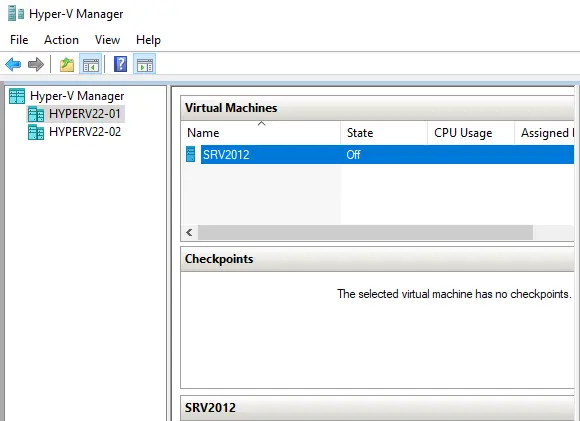
Start the virtual machine.

Now the converted VM is running on a different network. You have to enable the network and add it to the correct network in the Hyper-V Network environment.
Edit the newly converted virtual machine and select the Network section. Select the correct network adapter.
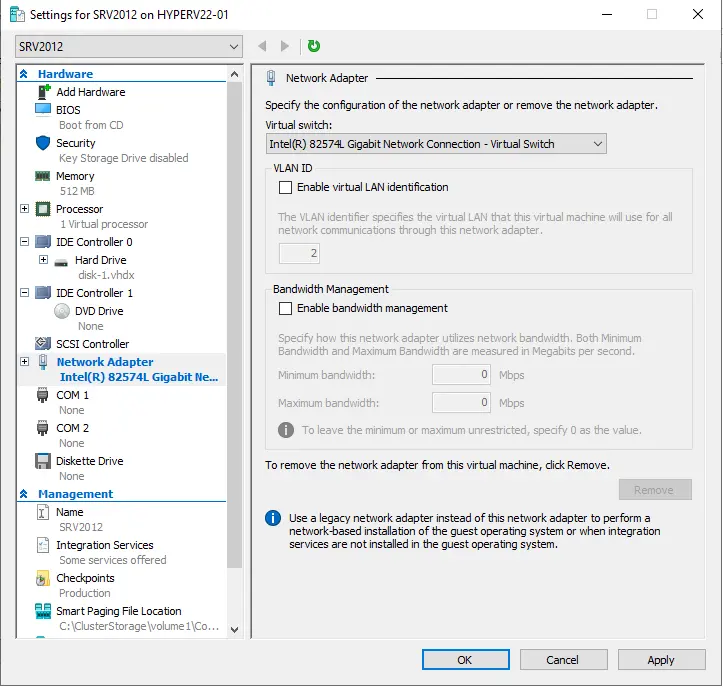
Conclusion
By following these steps, you can successfully convert a VMware virtual machine to a Hyper-V environment using Microsoft Virtual Machine Converter (MVMC). Although MVMC is no longer supported by Microsoft, it remains a useful tool for converting virtual machines from VMware to Hyper-V.
Read this article to find out how to convert a VMware VM to Hyper-V with MVMC


